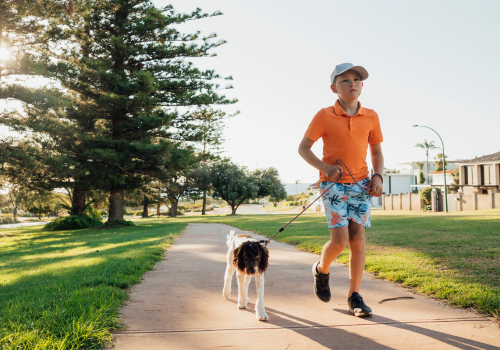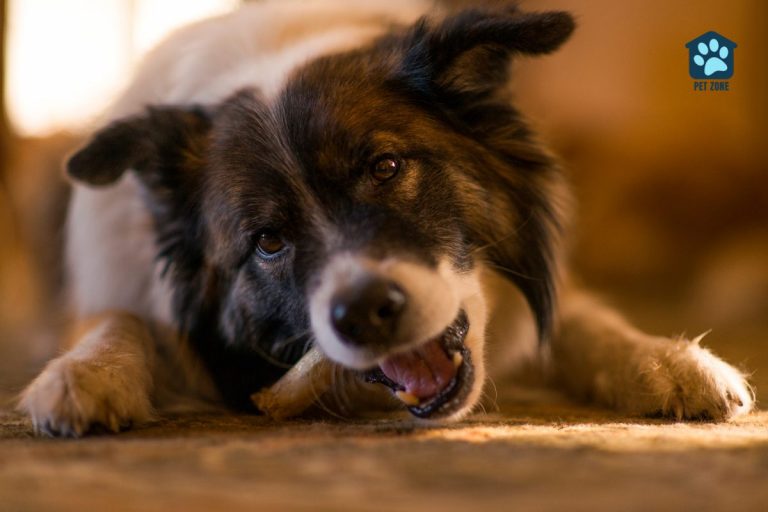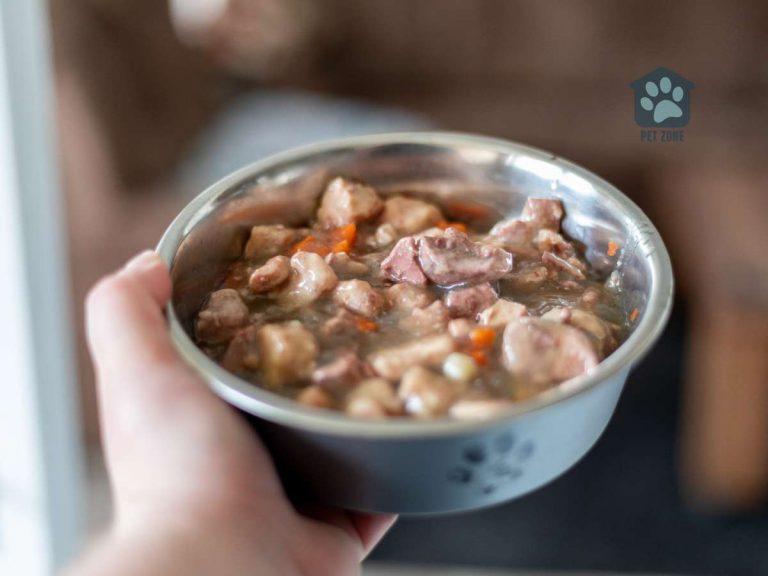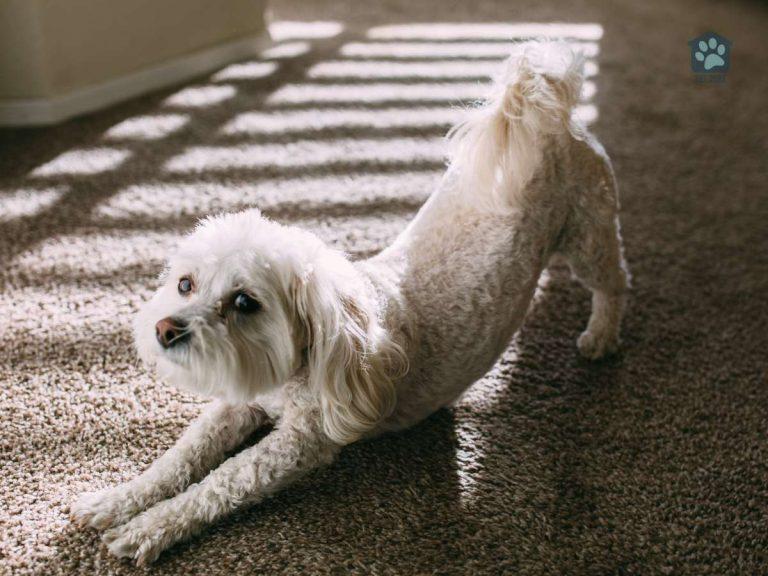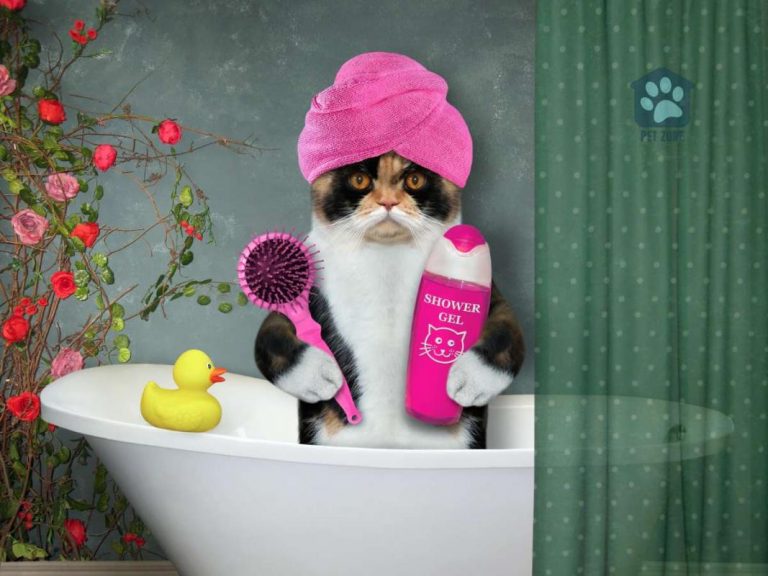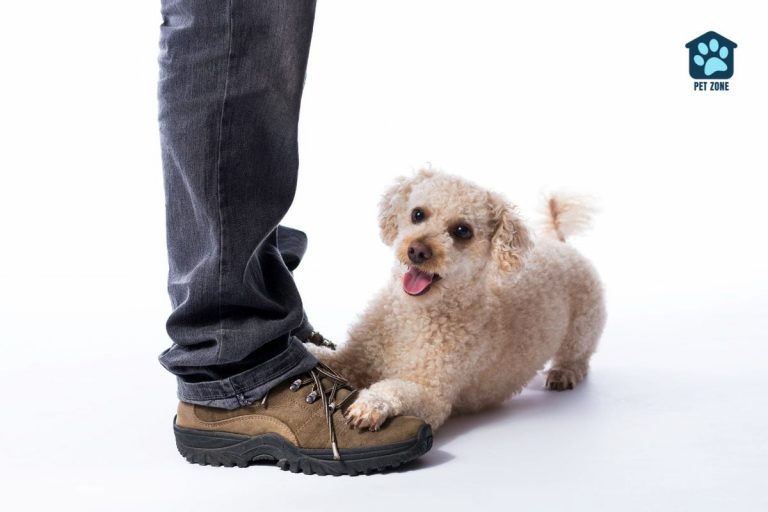Estimated reading time: 7 minutes
Puzzled about the best time to feed your dog – before or after a walk?
This question often stumps even the most conscientious dog parents, and the advice out there can seem conflicting. Some experts advocate for a meal after a stroll, while others propose the opposite.
So, where does the truth lie? Let’s unravel this conundrum together.
Walking a Dog After Eating
The Risk of GDV
Firstly, it’s important to understand the risks associated with walking your dog soon after eating.
Walking a dog immediately after a meal can lead to gastric dilatation-volvulus (GDV) or bloat, a potentially fatal condition that is more common in larger dogs.
The Benefits
Feeding before a walk can provide them with the energy they need to have a successful walk. Just like humans, dogs need fuel to function properly.
If you take your dog for a walk on an empty stomach, they may become lethargic and not have the energy to complete the walk.
Feeding before you go for a walk can also prevent them from becoming distracted by hunger during the walk.
What to Feed Them?
When walking a dog after eating, it is important to choose the right type of food. Avoid feeding a large meal before a walk, as this can cause digestive problems and lead to lethargy.
Instead, opt for a small snack that is high in protein and low in fat. For larger breeds such as Irish Wolfhounds, it is recommended to feed them at least two hours before a walk to prevent bloat.
Best Time to Feed Before a Walk?
It is recommended to wait at least 30 minutes (one hour is even better) after your dog has eaten before taking them for a walk to give them time to digest their food. This will prevent digestive problems and ensure that they have the energy they need for the walk.
However, if you have a larger breed dog, it is recommended to wait at least two hours before a walk to prevent bloat.
When choosing the feeding time for your dog, it is also important to consider their age and weight.
Puppies and senior dogs may require more frequent feeding times, while overweight dogs may benefit from a smaller meal before a walk to aid in weight loss.
Why You Should Walk Your Dog Before Eating
In this section, we will discuss why you should feed your dog after a walk, what to feed them, and how long to wait before feeding them.
The Benefits
Feeding your dog after a walk can help them recover from the exercise and replenish their energy. It can also help with weight control, as dogs that eat after exercise tend to burn more calories.
Additionally, going on a walk before eating can reduce the risk of stomach pain and canine bloat, which can occur when dogs eat before exercising.
What to Feed Them?
When feeding your dog after a walk or exercise, it is important to choose the right type of food. Wet or canned food can be a good option, as it can help hydrate your dog.
You can also give your dog some water to drink. Dry food can be given after the water has been consumed.
Avoid giving your dog treats or snacks immediately after a walk, as this can disrupt their digestion.
Best Time to Feed After a Walk?
Feeding your dog after a walk can be beneficial for their health and energy levels.
It is recommended to wait at least 30 minutes to an hour after a walk before feeding your dog. This allows their stomach to settle and digest any food that was eaten before the walk.
If your dog is older or has health issues, it may be best to wait longer before feeding them.
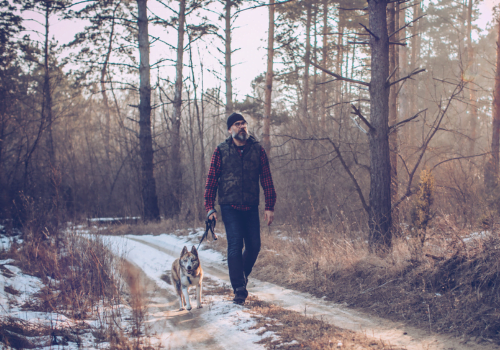
Schedule for Your Dog
When it comes to your dog’s schedule, it’s important to consider both their walking and feeding routines. Here are a few key factors to keep in mind:
How Often Should You Walk Your Dog?
Dogs need daily exercise to maintain their physical and mental health. The amount of exercise your dog needs will depend on their breed, age, and overall health.
As a general rule, most dogs will benefit from at least one 30-minute walk per day. Larger and more active breeds may need more exercise, while smaller or senior dogs may be content with shorter walks.
How Much Should You Feed Your Dog?
The amount of food your dog needs will depend on their size, age, and activity level.
On average, most dogs will do well with two meals per day. Consult with your veterinarian to determine the appropriate amount of food for your dog’s specific needs.
To help prevent overeating, it’s important to measure out your dog’s food rather than free-feeding. You can use a measuring cup or a kitchen scale to ensure that you’re giving your dog the appropriate amount of food.
Creating a schedule for your dog that includes regular walks and mealtimes can help keep them healthy and happy. By considering their individual needs and habits, you can create a routine that works for both you and your furry friend.
What is Bloat in Dogs?
Bloat, also known as gastric dilatation-volvulus (GDV), is a life-threatening condition that can occur in dogs.
It is more common in deep-chested breeds such as Boxers, Great Danes, Weimaraners, Poodles, German Shepherds, Irish Setters, Bloodhounds, and Akitas.
Bloat occurs when the stomach fills with gas, food, or fluid and then twists, preventing the escape of the contents.
The twisting of the stomach is known as a stomach twist, and it can cause a decrease in blood flow to the heart and stomach lining. This can lead to tissue damage and even death.
The twisting can also cause the stomach to rupture, which can lead to sepsis, a life-threatening infection.
What Are the Signs?
It’s important to recognize the signs of bloat, which include:
- Restlessness
- Lethargy
- Distended abdomen
- Unproductive vomiting or retching
- Rapid heartbeat
- Difficulty breathing
If you suspect that your dog is experiencing bloat, it’s crucial to seek veterinary care immediately.
Preventing Bloat in Dogs
While bloat can occur in any dog, it is important for owners of deep-chested breeds to be aware of the risks and take steps to prevent them.
This may include feeding smaller meals throughout the day, waiting at least an hour after exercise before feeding, and using a slow feeder bowl to prevent your dog from eating too quickly.
Conclusion
So what is our recommendation? Two options: wait at least 30 to 60 minutes to walk your dog after eating, or feed your dog 30 to 60 minutes after their walk. These are the best choices to ensure your dog stays healthy and happy!


